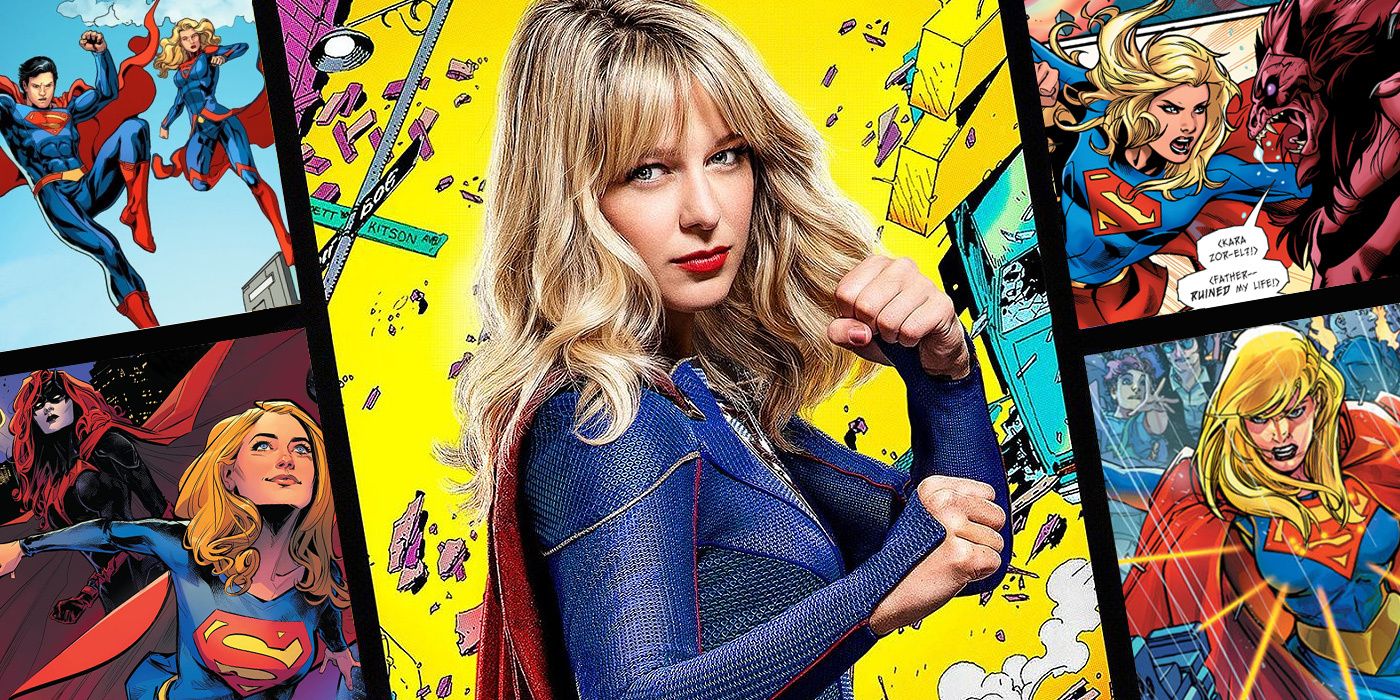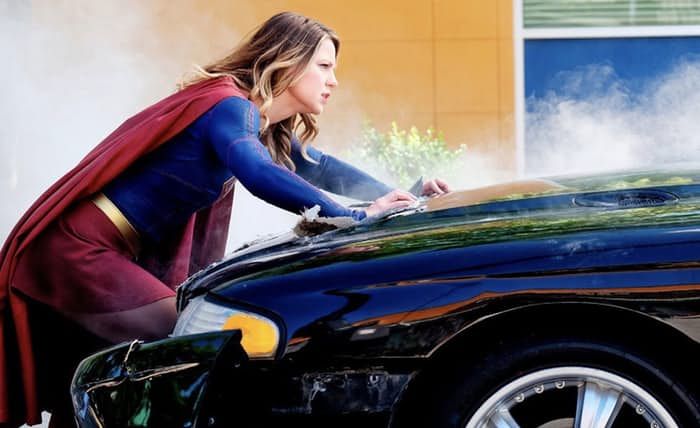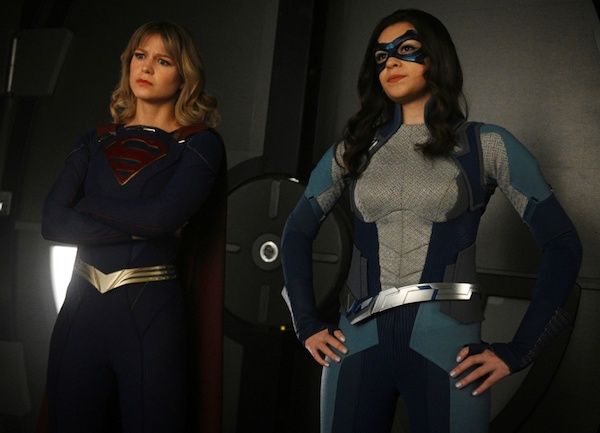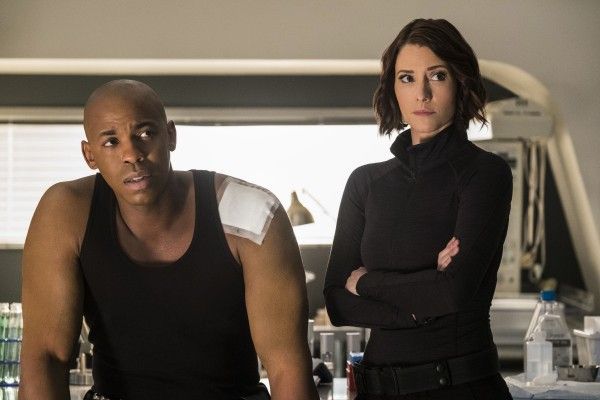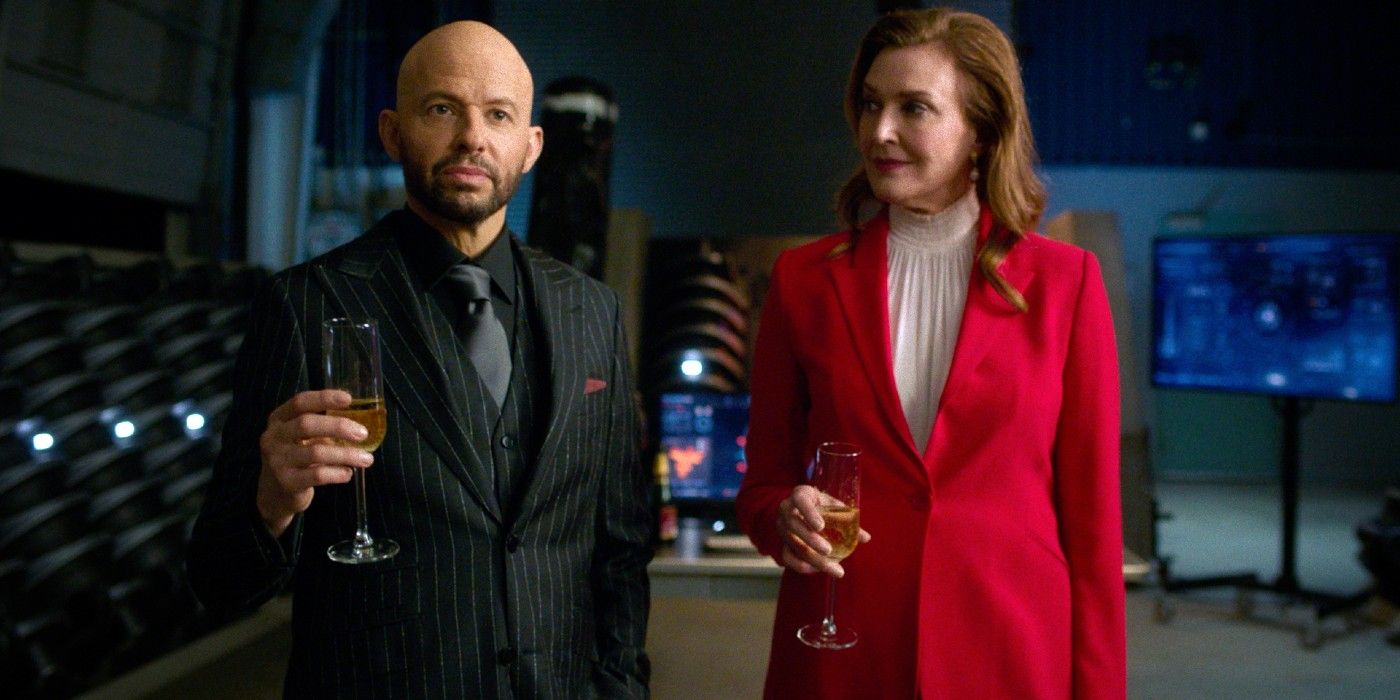If you’re of the mind that once you’ve seen one superhero show, you’ve seen them all, Supergirl was made to prove you wrong. Debuting in 2015 as the third property in the Arrowverse (since retitled The CWverse), Supergirl is now in its sixth and final season, and there’s no better time to celebrate how much this show has achieved in terms of representation and socio-political messaging, despite fighting an annual battle with the ratings. Yes, it’s undeniably escapist fun, but at its core, Supergirl reflects the feelings of real people by championing a diverse cast of actors and characters who are fully realized and authentic.
Starring Melissa Benoist as Kara Danvers/Supergirl, Chyler Leigh as Kara’s sister Alex, and David Harewood as J'onn J'onnz/ Martian Manhunter, this show appealed to a wide audience right off the bat. Benoist had made a name for herself on Glee, Leigh had stolen hearts on Grey’s Anatomy, and Harewood is a veteran of the British stage and screen. The first season even included the acerbic wit of Calista Flockhart as Cat Grant. This was meant to be a recipe for success.
However, Supergirl consistently struggled to rake in audiences like Arrow and The Flash. While Season 1 aired on CBS, its move to The CW from Season 2 onwards saw a loss in viewers and budget, as well as the departure of Flockhart. But unlike its CWverse predecessors, Supergirl has consistently pushed the boundaries of representation.
Since its premiere, Supergirl has consistently proven to be a show full of strong, powerful, and multidimensional women. Instead of pushing the unrealistic, one-dimensional tropes that typically plague female characters, these women could be the best and the worst at their jobs, or the best of friends and the worst of enemies. Over the seasons, they have made mistakes and owned up to them. They are unafraid of being feminists and proclaiming it loudly.
In an over-saturated landscape, Supergirl constantly strides ahead of its peers, frequently including actors from diverse backgrounds. The series cast a Black actor as Superman’s best pal, James Olsen (Mehcad Brooks), and became the first superhero property to cast a transgender actor as a transgender superhero when Nicole Maines joined the series as Nia Nal/Dreamer in a much needed and welcome boost for trans representation. The series also included a realistic depiction of a queer coming-out story. Actors with South Asian heritage aren’t often included in genre properties, but Supergirl has featured several, including Jesse Rath, Staz Nair, Rahul Kohli, and Tiya Sircar in prominent roles.
In Season 1, the creators bravely chose not to cast a Superman for the show — while his presence loomed large, it was his cousin who was the hero of the show, and Kara found her stride by the end of her freshman year. Even after the shift to The CW, Supergirl never stopped endeavoring to be bold. Season 2 saw Alex Danvers, one of the show’s main characters, come to terms with her sexuality. This was one of the rare instances where an entertainment property, especially a genre show, would address a character discovering their sexuality as an adult. The entire coming-out arc was deftly handled, so much so that Leigh later stated that she found many parallels between Alex’s journey and her own.
In Season 3, the show's commitment to its progressive mission statement continued to grow. The writers acknowledged that Mon-El (Chris Wood) was a toxic boyfriend for Kara, and gave James Olsen more time to be the superhero Guardian. Also, with the ever-present toll of gun violence mounting in the U.S., the showrunners made the shocking decision to take a stand against it. J’onn, as Director of the DEO (Department of Extranormal Operations) ordered his crew to use non-lethal weapons only. The show’s heroes have not used bullets or lethal weapons since. The reason this moment stands out is because Supergirl wasn’t the first show in The CWverse to address gun violence — when Oliver Queen (Stephen Amell) became the Mayor in Arrow, he had a similar conversation with concerned parties. But while Arrow never followed through with its message, the Supergirl writers showed viewers what change could really look like.
And then, Season 4 became unskippable, because the writers chose to reflect our real-world pain on screen. The premiere, which first aired in October 2018, identified the theme of the season — immigration and hate crimes through the lens of superheroes and aliens — at the height of a new explosion of racist and fascist rhetoric in the U.S., and the show found its scariest villain in Sam Witwer’s Agent Liberty because he represented the sentiments of bigoted sections of society. Supergirl and her super-friends were up against an idea as much as a man, and the idea was something we were seeing the American president spew out daily on cable news and social media.
The character Nia Nal (played by Nicole Maines) also debuted in Season 4, and while Nia was written to be more than just a representative of her community — she is empathetic and funny, and bursting with pop culture references — she does represent every fan’s dream of fighting alongside their superheroes. If you want a smile on your face, watch a scene with Nia enjoying her newfound powers.
Season 4 also introduced a new version of Lex Luthor: Portrayed by the normally likeable Jon Cryer, Supergirl’s Lex has been a compelling villain since his arrival — cunning, devious, and outright evil. After reappearing in Season 5, Cryer gave the show an injection of excitement that had been missing without the political discourse of its previous season. Lex’s rise remains unstoppable as he one-ups his far more virtuous sister, Lena (Katie McGrath), well into the final season.
Supergirl isn’t perfect. It’s cheesy and silly and inconsistent, which is exactly how one would describe its CWverse counterparts. However, the series has faced much harsher criticism from fans, possibly because of its unique make-up. One look at the Rotten Tomatoes audience scores for every show in the CWverse reveals a clear prejudice against Supergirl and Batwoman, the only two series with titled female leads. Supergirl also has a predominantly female cast, which has grown with the addition of Azie Tesfai as Kelly Olsen and Julie Gonzalo as Andrea Rojas, among others, and the creators aren’t afraid to explore the dynamic between multiple female characters.
Supergirl is much more than the sum of its parts. Where there’s been a push to produce grittier and edgier DC Comics adaptations, Supergirl has unabashedly embraced hope and positivity. Every episode is a firm reminder of its comic book origins — they’re fun, funny, colorful, action-packed, and touching. You may find yourself in tears more than once during the characters’ many tête-à-têtes, because the actors and writers imbue these conversations with so much realistic emotion. Kara and Alex’s sisterly bond drives the heart of the show, as does Kara and Lena’s friendship, Alex and Kelly’s love, J’onn’s fatherly protectiveness of Kara and Alex, Brainy and Nia Nal’s awkward romance, and Kara’s moving monologues.
The blunt approach of the series isn’t meant to be polarizing. Representing women and people across the spectra of gender, race, and sexuality doesn’t make Supergirl exclusionary. Instead, from the very first season onwards the showrunners have opened the door to welcome a new way to experience the superhero genre. There’s a wide variety of people that love comic book superheroes, so why shouldn’t those properties represent them? Furthermore, the show’s support of positive progressive ideas like immigration reform and gun control provides an empowering sense of real-world hope for its viewers. Even though the show is concluding this year, these six seasons will continue to be a reminder of why the world has always needed Supergirl.
Supergirl airs at 9pm ET Tuesdays on The CW.

